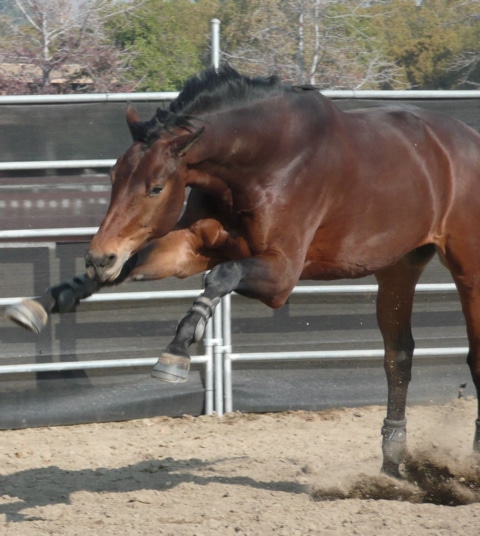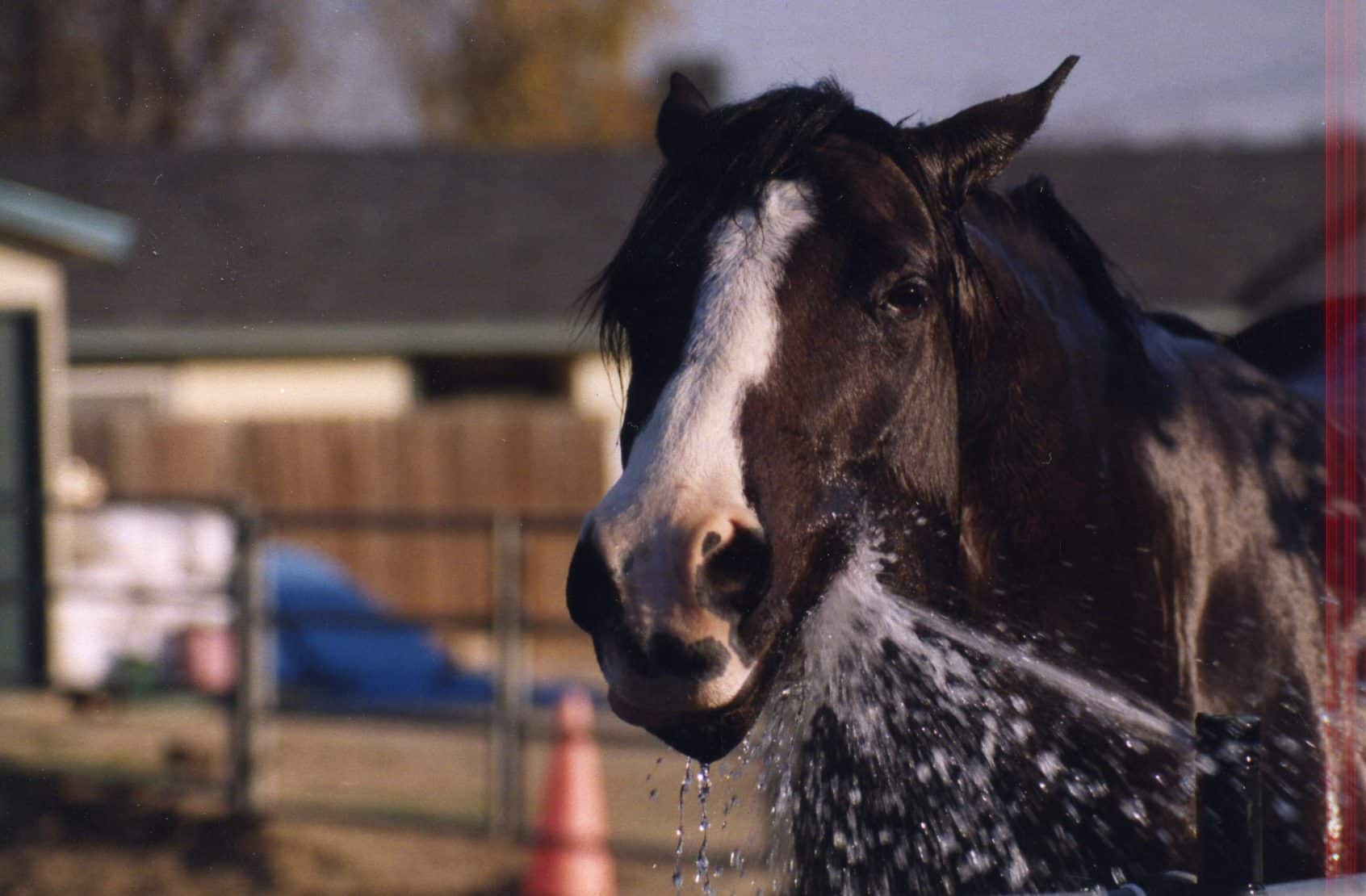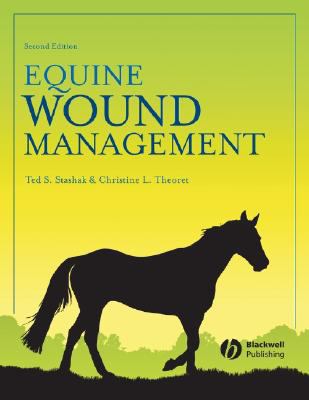 You may have noticed that there are a lot of products out there, all claiming to do something wonderful for your horse. It’s overwhelming. Every day, it seems, there’s a new supplement, medication, or approach that claims to be able to treat, prevent, or somehow be critical to treat, support, or do something undoubtedly critical for your horse (even at the cellular level!).
You may have noticed that there are a lot of products out there, all claiming to do something wonderful for your horse. It’s overwhelming. Every day, it seems, there’s a new supplement, medication, or approach that claims to be able to treat, prevent, or somehow be critical to treat, support, or do something undoubtedly critical for your horse (even at the cellular level!).
Hopefully, it’s not much of a surprise to you that a lot of that information that’s provided in the health care arena simply isn’t very good. In fact, sometimes, it’s very bad. For example, a 2017 paper found that almost two-thirds of 87 videos on YouTube contained misinformation about vaccines (CLICK HERE). In humans, this sort of misinformation comes at a real cost, for example, in humans, after being declared gone in the United States, measles has now reappeared, and that’s thought to be largely because of fears spread by misinformation.
It’s hard to tell how much direct harm is caused by misinformation in horses. Insofar as the horse’s health goes, it probably doesn’t matter all that much if someone pays for having a horse’s aura read, sticks little needles into his back in the name of some bit of ancient pseudowisdom, or if someone chooses to shine a little light on a horse’s injured tendon (to name a very, very few). But insofar as the amount of money that it makes people waste in horse care, each little drop of bad information fills a pretty big bucket of wasted spending, money that could be better spent just enjoying a horse.

Bad information spreads fast, by word of mouth, on the internet, in advertisements, and even from sources that should be otherwise trustworthy. The landslide of deception can bury good information, especially when it reinforces what people already want to believe (e.g., someone whose main goal is to use something “natural”).
According to people who look into such things (there really are people who look into such things), bad information travels faster than good information. According to research, the top 1% of false news tends to reach up to 100,000 people, whereas the truth rarely gets out to more than 1000 people. Plus, false news gets there faster. How fast news spreads spread seems to be directly related to how novel the news is (Stem Cells! Acupuncture!) as well as on the emotional reactions of the people receiving the news (CLICK HERE) It also doesn’t take much for false information to spread – it’s been shown that just 15% of the people spread 40% of the false information (CLICK HERE).
 It’s a bit overwhelming: even for me, sometimes. Still, as long as you’re aware of this problem, you should also be aware that you’re also the person who can (hopefully) help bring about some needed change. For starters, it helps to be honest with ourselves, and to be aware of our human tendencies, such as believing what we really want to believe. In fact, simply taking to time to think about things (“look before you leap”) can help protect a person against bad information (CLICK HERE).
It’s a bit overwhelming: even for me, sometimes. Still, as long as you’re aware of this problem, you should also be aware that you’re also the person who can (hopefully) help bring about some needed change. For starters, it helps to be honest with ourselves, and to be aware of our human tendencies, such as believing what we really want to believe. In fact, simply taking to time to think about things (“look before you leap”) can help protect a person against bad information (CLICK HERE).
So, I thought that it might be helpful to write something about how to get through all of the noise: how to get some idea of who to trust. In fact, a good bit of research in social science, media literacy, and psychology has been done showing how people can verify the accuracy of something before the spread another rumor. I thought it might be fun to try to modify some of those conclusions so that they can be more directly applied to horses.
S.I.F.T.
 Like many good things, a system that’s been created to help people sort through information also comes with a good acronym: S.I.F.T. The S.I.F.T. method, begun by a digital literacy expert (there is such a thing – you can look it up) named Mike Caulfield, and it can be broken down into four easy steps. Here goes (CLICK HERE if you want to take a deep dive).
Like many good things, a system that’s been created to help people sort through information also comes with a good acronym: S.I.F.T. The S.I.F.T. method, begun by a digital literacy expert (there is such a thing – you can look it up) named Mike Caulfield, and it can be broken down into four easy steps. Here goes (CLICK HERE if you want to take a deep dive).
S is for… Stop
One of the things that characterizes the horse world is how everything seems to important: so urgent. We have access to anything and everything, all of the time. Whether it’s surfing the internet on the computer or scrolling on the phone, many people feel compelled to be looking for something that needs to be done right now.
When it comes to trying to find out if something is likely to be true, speed is not your friend. Plus, it turns out that “relying on your gut” is more likely to lead you in the wrong direction than if you take a bit of time and think about things (CLICK HERE). So the first thing to do, when you hear some claim about a horse, or a horse’s health, is to just stop. Don’t share a Facebook post. Don’t comment on it. Stop. Then move on to the next step.
NOTE: It’s great if you do that with my posts, too.
I is for… Investigate (the source)
 It’s important to look into who created the information that you’ve just been told about. Maybe a friend told you. Maybe they showed up on your feed because of some computer-generated algorithm. Maybe you followed somebody because you found them interesting. Maybe it’s some company trying to see you something (seriously, it happens).
It’s important to look into who created the information that you’ve just been told about. Maybe a friend told you. Maybe they showed up on your feed because of some computer-generated algorithm. Maybe you followed somebody because you found them interesting. Maybe it’s some company trying to see you something (seriously, it happens).
It’s worth trying to find out. “Dr. Google” is not necessarily your friend in every case, but there is certainly good information out there to be found. Get away from what you were told and start looking for reputable websites. Wikipedia isn’t perfect, but since it’s crowd-sourced, some good information can often be found, particularly down in the references. Most major universities have websites that discuss various problems and diseases; they’re often good sources of information.
Of course, it’s always worth being skeptical of information that’s coming from a company or an individual that’s promoting something: for obvious reasons. Just because someone is trying to sell you something doesn’t necessarily mean that the “something” is worthless, but it’s sure a consideration.
While you’re searching for information, ask things like:
 Is the site independent of the claim being made? Don’t expect to go to the site of product X and expect to find information that might suggest that product X is anything less than wonderful (CLICK HERE to read one of the funniest things that I’ve ever read about a completely fictious product and tell me that it doesn’t sound familiar).
Is the site independent of the claim being made? Don’t expect to go to the site of product X and expect to find information that might suggest that product X is anything less than wonderful (CLICK HERE to read one of the funniest things that I’ve ever read about a completely fictious product and tell me that it doesn’t sound familiar).- If a claim is coming from an individual, it’s useful to look into the expertise the person has on the subject at hand. An earnest endorsement from someone is not the same as information backed by independent and repeated research. “Family owned” is different from “science-based.” If there are financial ties between the individual and the product, alarm bells should go off in your head.
- If an organization or a business is involved in a recommendation, it’s a good idea to ask why. For example, major drug companies have products that get recommendations from horse show organizations, and the horse show organizations get money for making those recommendations. “Follow the money,” is pretty good advice, when looking into products or services.
Lastly, if you’ve done all that (and it doesn’t have to take a long time to do it), consider asking this question: “Would you still trust the person making the claim if they said something that you disagreed with?” If someone is just telling you something that you want to hear, that might be nice, but it’s no reason to running out to spend money on something.
F is for…. Find
Let’s say you’ve stopped and investigated and you still have questions. You need to look deeper. What you’re looking for is whether or not a claim has been verified by an independent source.
 Here, again, Dr. Google can be your friend. Specifically, you’re looking to see if a claim that’s been made has been independently verified by someone who doesn’t have anything to gain from the claim. That’s where places like websites from veterinary schools can come in – they’re usually trying to give factual information, and not just push along another claim. PUBMED can be a good place to look, particularly if you can find studies that rigorously analyze and summarize the results of other studies (those are usually called “Systematic Reviews”). That said, if you’re going to use PUBMED, don’t just stop a one study that may support what you want to believe, rather, look and see if you can find several. If the results tend to be all over the board, or if there’s just a single study that’s supporting an effect, it’s probably best not to get too optimistic.
Here, again, Dr. Google can be your friend. Specifically, you’re looking to see if a claim that’s been made has been independently verified by someone who doesn’t have anything to gain from the claim. That’s where places like websites from veterinary schools can come in – they’re usually trying to give factual information, and not just push along another claim. PUBMED can be a good place to look, particularly if you can find studies that rigorously analyze and summarize the results of other studies (those are usually called “Systematic Reviews”). That said, if you’re going to use PUBMED, don’t just stop a one study that may support what you want to believe, rather, look and see if you can find several. If the results tend to be all over the board, or if there’s just a single study that’s supporting an effect, it’s probably best not to get too optimistic.

American novelist and poet Gertrude Stein, who famously said, “There’s no there there.”
What you’re trying to find is if there are credible, independent sources that are saying the same thing as what you’ve been told, and that also tell you why they’re saying it.
T is for… Trace
What you’re trying to find here is where the claim came from originally. Even if the claim has been repeated, it can be really interesting to go back to the original source. Sometimes, you’ll find that there’s not as much “there” as you’d like there to be.
HOW I’VE DONE IT
Here’s an example of how I used the S.I.F.T. method. I even ended up even publishing a scientific paper about it (CLICK HERE if you want to a link to the paper ).
When I first got out of veterinary school, I learned that if you gave antibiotics to a horse with “Strangles,” an infection caused by a bacteria, you’d be more likely to drive the bacteria inside the horse, so that the abscesses that are typically seen under the horse’s  jaw wind up appearing inside the horse (often, with fatal results). That didn’t make a lot of sense to me, so I stopped (the “S”). I went to the library and I really couldn’t find any scientific reports that supported the claim (the “I”). Undaunted, I kept tracing back to the original report that made the claim (I looked at the reference, went to the referenced paper, and kept backtracking).
jaw wind up appearing inside the horse (often, with fatal results). That didn’t make a lot of sense to me, so I stopped (the “S”). I went to the library and I really couldn’t find any scientific reports that supported the claim (the “I”). Undaunted, I kept tracing back to the original report that made the claim (I looked at the reference, went to the referenced paper, and kept backtracking).
It turns out that the claim about antibiotics driving the infection inside the horse was made by two veterinarians who were invited to speak at a human conference about Streptococcal diseases (strangles is caused by Strep equi). (the “F”). Those two guys – who were undoubtedly wonderful fellows in many ways – said that, in their experience, they thought that giving penicillin “too early” caused more problems. That was it. No research. No evidence. (That was the “T”). So, it turns out that the whole statement was just the repeated opinions of a couple of veterinarians: opinions that kept getting repeated over and over. Happily, nobody really says that much anymore – at least not out loud – but a bit of S.I.F.T.ing could have saved a lot of time and worry: over decades.
NOTE: By the way, CLICK HERE if you want to read about strangles.
All this takes time and patience, but it can be done. S.I.F.T.ing information before you spread it around might seem like a major pain in the backside, but spending a bit of time on your end might help stop the spread of information that wastes time, effort, and money, and, at its worst, can hurt horses.

Anyone can make a claim. And all it takes for claim to go viral is for people to just pass it along. It’s our responsibility as people who care about horses to do our best to make sure that anything that we post, like, or share is true and accurate. S.I.F.T. We owe them that. Try it yourself and let me know what you find!







